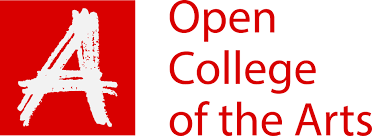Paul Seawright interview discussing criticism of his work:
Sometimes my work will be criticized for not being direct enough, for not being explicit, for being too ambiguous That the narrative is obscured or difficult. There’s a fine balance there. If it is too explicit then it becomes journalistic. I guess if it’s too ambiguous it becomes meaningless. The holy grail is to make work that visually engages people, that draws them in but gives itself up, gives its meaning up slowly. Good art does that and yet still gives its meaning up. You still have to be able to access what you are talking about. I think the work does that. Once you know its context, where the photographs were made, then each work is very resonant with all kinds of ideas. An exciting thing about art, the way people engage with art, the construction of meaning is not done by me its done by the person looking at the art work. You must leave space for that to happen. If you don’t then you really are going back to an editorial picture in a magazine that has to function in a different way. It has to be quick. It has to give up its meaning quickly because people will look at it for no more than fifteen seconds and turn the page. So there has to be a difference between that and what you do as a photographic artist. Finding that line is, I guess, the challenge.
I had looked at some of Paul Seawright’s work [2] about a year ago on the recommendation of my EYV tutor. Although I didn’t write it up in my course notes I admired the work as it made a political statement but didn’t take sides. It wasn’t judgemental. In fact if you didn’t know the context of Seawright’s work, his home, the titles or accompanying text you would be unsure as to what the point of the image was. The criticism of his work is a result of that lack of context and understanding.
The content of the work, such as ‘Police Force’ is not obvious enough to be journalistic but is there enough in the images to be regarded as art? Colour, composition, lighting? I think the answer to this is, yes.
 If I walked in to a gallery and there was a room entitled ‘Police Force’ by Paul Seawright showing those images I would definitely get a sense of a message being conveyed and an uncomfortable feeling. There is ambiguity in the title. Is he criticising the amount of ‘force’ used by the RUC or is it a document of their role in Northern Ireland.
If I walked in to a gallery and there was a room entitled ‘Police Force’ by Paul Seawright showing those images I would definitely get a sense of a message being conveyed and an uncomfortable feeling. There is ambiguity in the title. Is he criticising the amount of ‘force’ used by the RUC or is it a document of their role in Northern Ireland.
These images being displayed on a gallery wall allows the viewer to contemplate the meaning, the photographers thoughts and intentions. Admittedly without context the ‘Police Force’ set of images would be too ambiguous.
It is, maybe, for this reason, and past criticism of his work, that his ‘Sectarian Murder’ series was accompanied by text. The interesting aspect of this work is Seawright’s use of newspaper reports. A clever choice when trying to distinguish your ‘artistic’ work from journalism.

References:
- Paul Seawright interview [accessed 23/08/2017]
- Paul Seawright – Sectarian Murder [accessed 23/08/2017]
- Paul Seawright – Police Force [accessed 23/08/2017]
